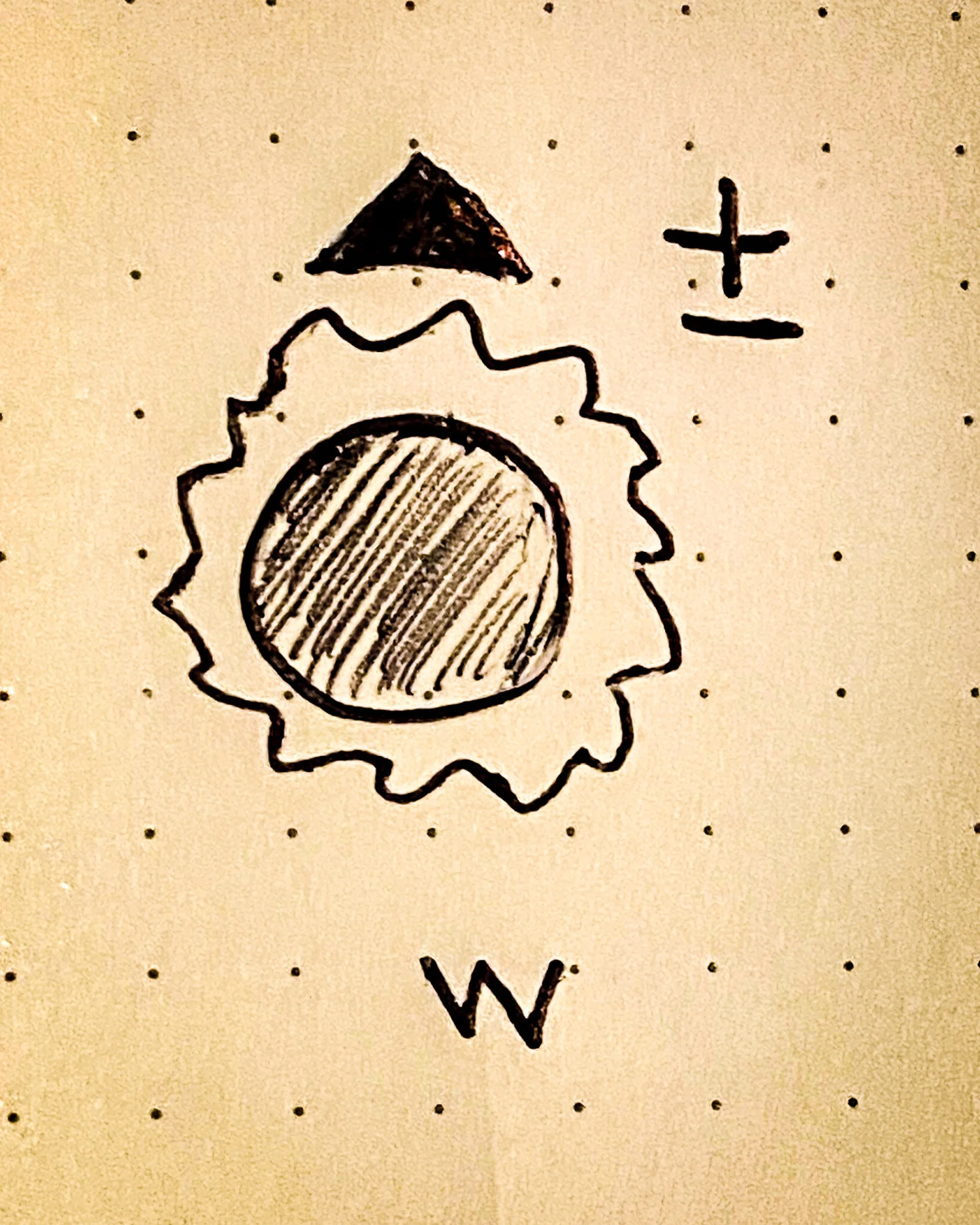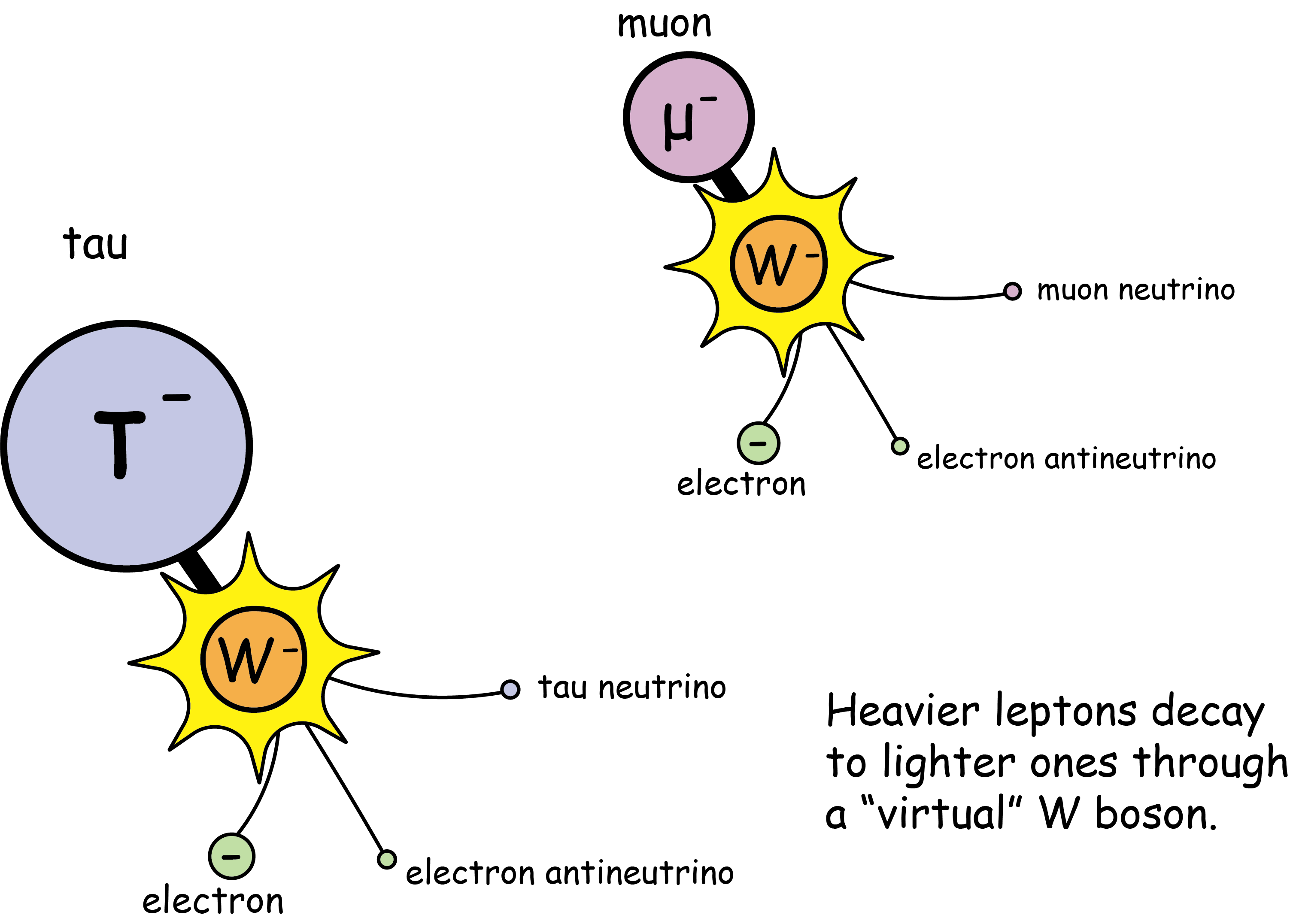
The W Boson
With a mass of 80.4 GeV, the W bosons are heavy particles. On paper, they carry the weak nuclear force and have much in common with the photon and the gluon. But look closely, these bosons are very different beasts.The W’s most glaring difference is that heavy mass. The photon and the gluon are massless, and so in principle travel at the speed of light. The photon traverses the universe essentially impeded, while the gluons trap themselves into other nuclear particles.
The W bosons might similarly trap themselves, if not for the fact that they decay. Rapidly. On average they only appear for 3×10−25 seconds, a mere blip that we can only really see because we know where to look. The W’s decay into either quarks or leptons, they’re so heavy there’s a lot of room for diversity.
There are other complications. Notably, the W bosons also carry electric charge. The same values of charge that the electrons and protons have, plus or minus e. There are two W bosons, one with each charge, and they are antiparticles of themselves.
The appearance of the electric charge in a seemingly unrelated force has deep implications for particle physics that we will uncover when we look to the Higgs.
Being so weak, and carrying the charges of the much stronger electromagnetic force, the weak nuclear force cannot bind its own charges together into little molecules like the gluons do. But it still tries! The results are explosive and typically observed in the wild as radioactive “beta” decay. Other opportunities to see tracks of the W bosons include other particle decay: taus to muons, muons to electrons, or even charged pions to muons. K-capture, where a nuclei eats an electron, is also evidence that a W boson was present.
Figure: W bosons and lepton decay

Most of the time, we experience the weak nuclear force through nuclear decay. "Beta" decay is analogous to how leptons like the muon or the tau decay.
One final oddity about the W bosons is that they - like their cousin the Z - are all left-handed. This is technical fact mired in technicalities, but suffice it to say W bosons can only communicate with particles are spinning clockwise relative to their motion. Under the right circumstances - as originally laid on in the famous Wu experiment - you can see the W bosons decaying to electrons that only go left, not right.
Why the W’s should prefer left handed particles remains a mystery, although it is almost surely related to the host of oddities involved with the neutrino’s mass.